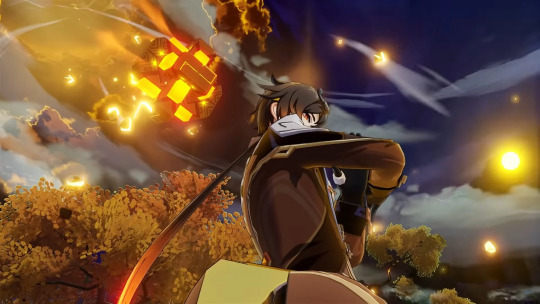#Big shout out to my plant metabolism class for allowing me to know even a smidge of how this could possibly work
Explore tagged Tumblr posts
Note
would soil from zhongli’s meteor be able to grow plants
Oh a question about my favorite Genshin man and plants... hmm lets see.
Now, I'll preface this by saying I'm not a space scientist so I don't know every detail about meteorites, but from what I could scavenge one type of meteorite has metals such as iron, which plants need to grow, and scientists have been conducting experiments to grow plants on ground up meteorites which seem to be showing promising results. It seems that the composition of meteorites can support plant growth, so the question now is if we can translate this to a fictional character.

Clearly Zhongli's meteor does not resemble a typical meteor, looking more like a glowing six-piece burr puzzle. And while his meteor and his pillar look to be made out of the same material, there is no information (from what I could find) about what they could be composed of. However, that does not discourage me because while I was studying meteorites, I did stumble upon the Esquel meteorite:

I don't know about you, but the dark stone surrounded by yellow gems that glow when hit by light... looks awfully familiar to me. I would be willing to say that, all fictional logic aside, that if Zhongli's meteor was real that it would be made out of the same stuff as this meteorite.
So, what are Esquel meteorites made out of? Well, they belong to the class of stony-iron meteorites, known as pallasites, which means they're mainly comprised of an iron-nickel mixture. Those gems embedded in the meteorite are peridot (birthstone shout out). This gives us a lot to work with in terms of chemical composition. We already know that there will be iron and nickel, but the peridot adds magnesium, another essential plant nutrient. Some other components of Esquel meteorites are schreibersite, troilite, and phosphates, providing phosphorous and sulfur.
This makes up a lot of the essential nutrients plants need, except two big ones are missing; nitrogen and potassium. Another component of Esquel meteorites are pyroxenes, and since no specific pyroxene was mentioned we can assume they could add a lot of other beneficial nutrients, such as calcium, zinc, and manganese but not quite what we were looking for. Turning to what else could compose the stony-iron component of the meteorite, carlsbergite contains CrN, or chromium nitride, and feldspar, which has a potassium variant, can also be found.
Putting all of this together, we have all of the major nutrients and most of the micronutrients that plants need. However, there is another component to this that I have not discussed; the availability of each of these elements. For the plants to have a base to grow on, we'd have to assume that Zhongli's meteorite has eroded into a soil-like composition, but just because big rocks turn small does not mean that their compounds are automatically available. These plants would almost definitely need some sort of bacteria or other microorganism to break out whatever compounds don't leak out into the water, or even produce it themselves so the plants could survive. Microorganisms have been seen living on meteors, so in a completely isolated environment this is not out of the question. Regardless, assuming that the meteor landed on Earth or somewhere similar, then microbes from the soil it lands on could colonize the meteorite, helping to support the plants when they land later.
So, to sum this analysis up, I believe that after erosion and with the help of a few microorganisms that yes, plants could grow on Zhongli's meteorite.
#I love interesting questions like this that I don't immediately know the answer to#Big shout out to my plant metabolism class for allowing me to know even a smidge of how this could possibly work#I just hope that I got my meteorite facts to a semi-realistic standard#but if an expert happens to see this and notices some flaws I'd love to know what they are!#Also I spent almost 3 hours of my work day doing this instead whoops#Anyways *insert joke about me also wanting to grow on Zhongli's pillar*#zhongli#genshin impact#analysis
5 notes
·
View notes